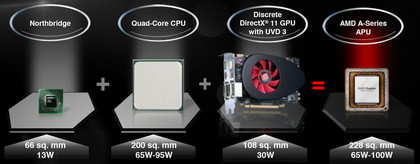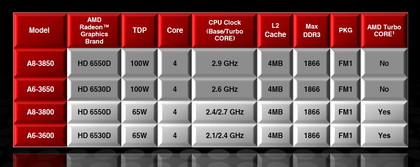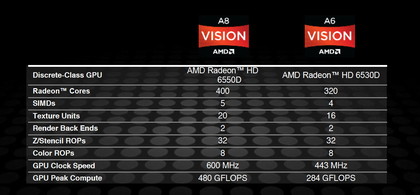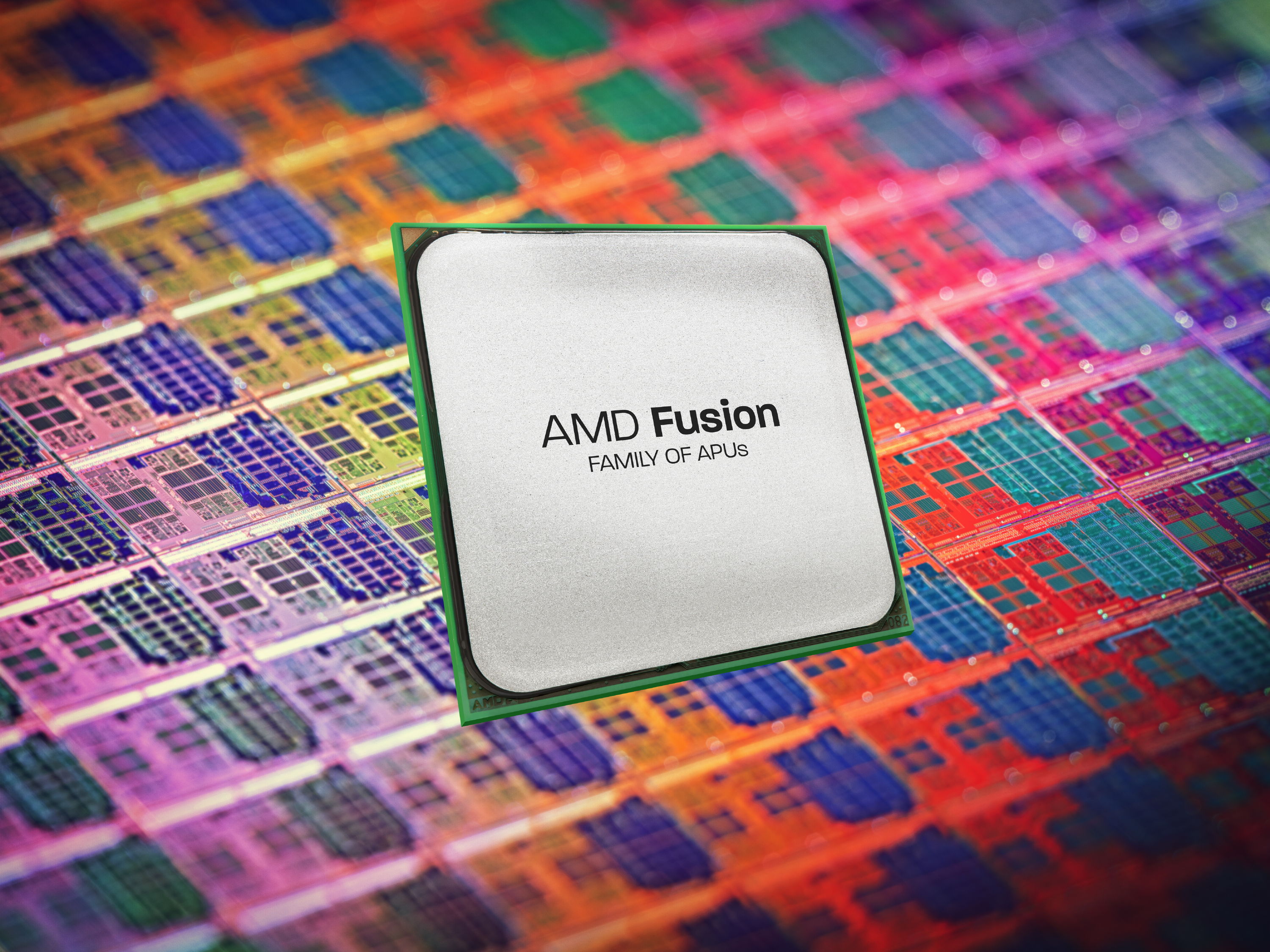Why you can trust TechRadar

The first thing to talk about is what has actually been crammed onto this 228 sq. mm slab of silicon.
Sitting inside that unassuming package is a fully-featured quad-core CPU, based on the Stars architecture that made up the Phenom processors, a discrete-class DirectX 11 GPU and a full Northbridge too.
The normal Phenom II CPUs are around 200 sq. mm alone, with the GPUs usually around half that, so fitting all three into such a small form factor is impressive alone. When you add in the fact that it's running at around 100W for the top-end APUs, around the same as a decent quad-core CPU, it makes for one serious engineering feat.
Sadly though we're not really talking about a full Phenom II CPU, the optimised Stars architecture in the AMD A8-3850 Fusion APU actually has more in common with the Athlon II processors.
The missing ingredient is that L3 cache; the Llano Lynx APUs only come with 1MB of L2 cache per core, making a total of 4MB for the numerically challenged out there. Both the Phenom II and Athlon II carry only 512KB per core of L2 cache, but the Phenom II supplements that with a full 6MB of L3 cache shared across the CPU cores.
This AMD A8-3850 Fusion APU comes with a stock speed of 2.9GHz, making it roughly analogous with the Athlon II X4 635 processor.
It's a full-fat quad-core, though lacks the Turbo Core functionality of the lower-end Llano Lynx Fusion APUs. Still, at 2.9GHz across all cores it's plenty fast enough for general computational tasks.
It's also capable of utilising much faster memory than its Athlon II and Phenom II brethren.
It maxes out with dual channel DDR3 running at 1,866MHz, and with the new integrated GPU in this APU that faster memory makes a significant difference, but we'll come to that later.
There will be lower-end SKUs of these Llano Fusion APUs, in both A8 and A6 nomenclatures. The A8 APUs come with the top HD 6550D AMD Radeon GPU and the A6 has the weaker HD 6530D. There will be two lower-powered (65W) variations in both A8 and A6 trim with lower cock speeds but with Turbo Core enabled to take up a bit of the slack.

On the GPU side the AMD Radeon HD 6550D is a proper DirectX, discrete-class graphics chip. This top graphics part of the A8 series APUs comes with 400 unified shaders (now called Radeon Cores in response to NVIDIA's CUDA Cores), twenty texture units and eight ROPs, running at 600MHz good measure. In terms of relative discrete cards you're looking at the AMD Radeon HD 5570 levels of performance from an integrated graphics solution.
The lower-end AMD Radeon HD 6530D will then be fairly closely specced to the Radeon HD 5550, with 320 shaders, sixteen texture units and eight ROPs.
If you want to compare with the Sandy Bridge top-end graphics part, the HD 3000 (which is only available in the unlocked K-series chips) it's night and day.
The Intel part is only DirectX 10.1 compatible and is only capable of delivering around 125 GFLOPS of graphical processing power at most. The Radeon HD 6550D in this A8-3850 Fusion APU by contrast tops out at 480 GFLOPS.

To go along with the brand new APU AMD has also created a brand new desktop motherboard, with a whole new socket too. The socket is the new 905 pin FM1 and the chipset is the A-series.
The top-end chipset is the A75 with the lower-end A55 coming behind it. The only real difference is in the interfaces on offer with the more expensive part.
On the A75 you have both native 6Gb/s SATA interfaces and USB 3.0 connectivity. The USB 3.0 controller offers four sockets on the A75 boards and a full spread of six SATA 6Gb/s ports.
The A55 on the other hand is settling in the I/O dark ages with plain ol' SATA 3Gb/s and USB 2.0. But for a budget offering you're unlikely to be missing out on those pricier interfaces too much.
Though the A55 boards are unlikely to have the overclocking chops of their more expensive A75 brethren, but will offer incredibly competitive pricing.
Current page: AMD A8-3850 Fusion APU: Architecture
Prev Page AMD A8-3850 Fusion APU: Overview Next Page AMD A8-3850 Fusion APU: Benchmarks